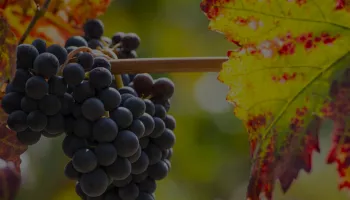
Drinking pastis, all you need to know
Who hasn't heard of drinking pastis? But, beyond local wine and liquors, do you really know its origin and why did this alcoholic drink become so popular?
Anyone who has been to the South of France at least once has undoubtedly seen this image of a warm, sunny afternoon filled with the scent of Mediterranean vegetation. In the background, you can hear the frantic sound of cicadas and the discussions of the locals playing a game of pétanque.
At that time, time flows happily and peacefully; no one is in a hurry anywhere - so it's the perfect time for a little aperitif in good company! Not only will drinking pastis quench your thirst but above all, it will refresh you wonderfully. This is how drinking pastis has gone through decades to be still present today...
What is a pastis drink?
Pastis is a sweet and aniseed liqueur produced mainly in the South of France. It is primarily sipped there because Marseille remains the undisputed capital of the drink. Due to its colour, it is also affectionately called the "little yellow", the "passage", or the "anisette".
The term "pastis" itself comes from the Provençal dialect, which means "mixture" or "porridge".
Pastis drink usually contains 40 to 45% alcohol. The more potent versions of the drink, mainly produced in the Phocaean city, are called "pastis de Marseille"; and have a higher anethole content.
The liqueur is drunk almost exclusively with the addition of water. When added, the drink takes on a milky colour and is often called "lait de Provence". The colour change occurs due to the precipitation of anethole, a poorly water-soluble substance. A similar phenomenon can also be observed when cooling pure Ricard in the refrigerator. In this case, the turbidity appears at 8°-10°C; while replaced from room temperature, it regains its original properties without losing quality and taste.
How is the famous anise pastis French drink made?
According to European legislation, pastis drink must be made by flavouring neutral alcohol of agricultural origin with extracts:
- Green anise
- Star anise (star anise)
- Fennel
- Liquorice
- And other plants containing a similar aromatic ingredient.
This process can be done in three ways (or a combination of them) – these can be:
Maceration and/or distillation
A re-distillation of alcohol with aromatic plants
Or an addition of natural extracts of distilled plants.
As for the chemical composition, pastis mainly contains anethole (1.5-2 g/l) present in anise and dill, chalcones, and glycyrrhizic acid (0.05-0.5 g/l). These are the primary active ingredients of liquorice root extract.
After filtration, the aniseed liqueur is slightly sweetened (less than 100 g/l) and coloured with caramel, thanks to which most pastis has a yellowish or even slightly amber tint. Some producers, however, do not use dyes, but some (e.g. Janot) also show unusual chromatic inventiveness and colour the pastis blue.
Generally, the essential aromatic ingredients used by all producers are anise and liquorice. They give pastis its unique aroma and flavour. In addition, the pastis French drink is enriched with other ingredients; but their quantity and selection are a well-kept secret of each manufacturer.
Some of them use several dozen different aromatic ingredients to produce pastis, not only from France; but also all over the world.
The healing properties of drinking pastis
It is well known that alcohol and health do not go hand in hand; anyone who has ever abused alcoholic beverages has found out. But pastis can be an exception to this agreed-upon rule as being unpleasant.
The anise it contains has been proven to have the properties of relieving intestinal discomfort for centuries. But whether it is healthy or not, one thing is for sure; pastis is always delicious!
Did you know that you can book a pastis making workshop and discover even more about the fascinating properties of the unique drink. And of course, sample some delicious pastis!

